Evaleen Stein

Evaleen Stein (October 12, 1863 – December 11, 1923) was an American author of poetry and prose as well as a limner. She was the author of eleven volumes of stories and three books of verse. In addition, she translated two volumes of poetry, one form the Japanese (When Fairies Were Friendly) and another from Italian. An ardent lover of nature, Stein reflected this tendency in most of her poems and stories.[1]
Early life and education[]
Evaleen Stein was born in Lafayette, Indiana, October 12,[2] 1863,[3] and passed her whole life in that city. The family of her father, John A. Stein, was originally from Pennsylvania, and that of her mother, Virginia Stein, came from Virginia.[4] She received a liberal education and at an early age showed her poetic talents. Her father was a lawyer and a writer of verse and prose, and he directed her studies and reading so as to develop the talents which he discovered in her.[5] After his death, Stein resided with her mother in her native city.[6] Evaleen's brother, Orth Stein, had been widely known as a newspaper writer.[7]
Stein was educated in the public schools of Lafayette. Her training included art, and she has won a reputation as an artist of exceptional merit. She took an art course in the Art Institute of Chicago.[5][4]

Her first poem was written in 1886 and sent to the Indianapolis Journal, where it was published. For a number of years afterward, she continued to contribute poems to various newspapers, but more especially to the Indianapolis Journal.[4]
Career[]
She did much decorative work for Chicago and New York City societies. She began to publish poems in local papers about 1887, and her work at once attracted attention by its finish and mastery of form, as well as by its spirit and sentiment. She contributed prose sketches to the local press, and was a contributor to St. Nicholas, the Boston Transcript, the Indianapolis Journal and other periodicals. Some of her poems appeared in various collections.[5]
In 1897, Copeland and Day, of Boston, brought out her first book, a small collection of poems, called One Way to the Woods, the first edition being exhausted in a few weeks.[6] In 1898, she wrote her first short story; this with another story written the next year, appeared in St. Nicholas. These two short stories together with two longer ones, not before published, were brought out in book form in 1903 by the Bobbs-Merrill Co., of Indianapolis; the volume being called Troubadour Tales. The year before, the same company had brought out her second book of verse, called Among the Trees Again. Another book, a story for children, entitled, Gabriel and the Hour-Book, was published in 1906 by L. C. Page and Co., of Boston. Some of her poems were included in Stedman's American Anthology, and also in various other collections.[4]
Stein was not only an author an dpoet, but was also an illuminator. Her most outstanding work in this line was probably an illumination of the Twenty-third Psalm, for which she received a certificate of honorable mention from the Panama-Pacific exposition at San Francisco. Her work in this line was exhibited by the John Herron Art Institute in Indiana and in metropolitan exhibits.[1]
According to White (1910), Stein's poetic art was characterized as being the most exquisite, delicately limned and evanescently outlined as a Japanese print, with an ariel-like trick of fancy. As an artist with brush and pencil, Stein was as perfect a technician as she was with her writing, her illuminated texts having a mediæval suggestion and her decorative manuscripts being pre-Raphaelitish in sentiment.[7] She also wrote several books for children.

Her bookplates -she designed four: Nathan Stein, Anne Benbridge O'Ferrall, Paul Faude, Edward Ayres- all included a flower motif, conventionalized, indicative of her ever haunting love for those expressions of natural beauty which she had woven into her verse.[7]
In her Lafayette home, she is the center of a large circle of cultured persons.[5]
Death[]
She died in December 11, 1923 and was interred in Greenbush Cemetery.[3]
Selected works[]
- Poetry books
- One Way to the Woods
- Among the Trees Again
- Children's books
- Our Little Norman Cousin of Long Ago
- The Christmas Porringer
- One Way to the Woods, 1897
- Among the Trees Again, 1902
- Troubadour Tales, 1903
- Gabriel and the Hour Book, 1906
- Gabriel and the Hour Book, 1906
- The Little Count of Normandy; Or, The Story of Raoul, 1911
- Our Little Frankish Cousin of Long Ago:, 1917
- Our Little Celtic Cousin of Long Ago, 1918
- Pepin: A Tale of Twelfth Night, 1924
- Little Poems from Japanese Anthologies, 1925
- A Little Shepherd of Provence, 1937
Gallery[]
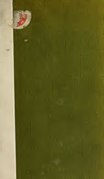
Among the trees again
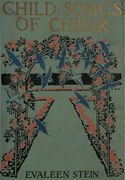
Child songs of cheer
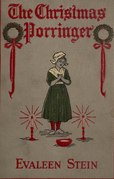
The Christmas porringer
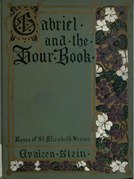
Gabriel and the hour book
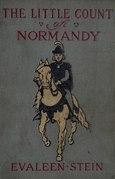
The little Count of Normandy; or, The story of Raoul

One way to the woods
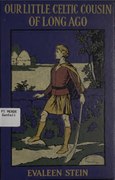
Our little Celtic cousin of long ago
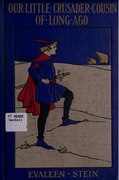
Our little crusader cousin of long ago
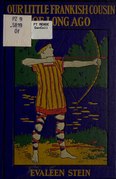
Our little Frankish cousin of long ago
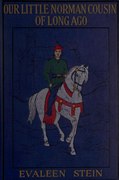
Our little Norman cousin of long ago
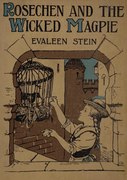
Rosechen and the wicked magpie
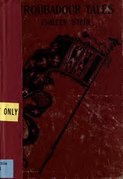
Troubadour tales

When fairies were friendly
References[]
- ^ Jump up to: a b "Evaleen Stein and Her Work in Literature". Journal and Courier. 13 December 1923. p. 11. Retrieved 20 April 2021 – via Newspapers.com.
- ^ "Memorial for Evaleen Stein. School Pupils to Pay Tribute to Poetess on Anniversary of her Birth in Lafayette". Journal and Courier. 11 October 1924. p. 1. Retrieved 20 April 2021 – via Newspapers.com.
- ^ Jump up to: a b Kriebel, Robert C. (4 February 1979). "Evaleen best-remembered Stein". Journal and Courier. p. 72. Retrieved 20 April 2021 – via Newspapers.com.
- ^ Jump up to: a b c d Rice 1908, p. 33.
- ^ Jump up to: a b c d Willard & Livermore 1893, p. 683.
- ^ Jump up to: a b Heiney 1900, p. 456.
- ^ Jump up to: a b c White 1910, p. 101.
Attribution[]
 This article incorporates text from a publication now in the public domain: Heiney, Enos Boyd (1900). Poets and Poetry of Indiana: A Representative Collection of the Poetry of Indiana During the First Hundred Years of Its History as Territory and State, 1800 to 1900 (Public domain ed.). Silver, Burdett. ISBN 978-0-7222-0809-0.
This article incorporates text from a publication now in the public domain: Heiney, Enos Boyd (1900). Poets and Poetry of Indiana: A Representative Collection of the Poetry of Indiana During the First Hundred Years of Its History as Territory and State, 1800 to 1900 (Public domain ed.). Silver, Burdett. ISBN 978-0-7222-0809-0. This article incorporates text from a publication now in the public domain: Rice, Alonzo Leora (1908). Some Indiana Writers and Poets (Public domain ed.). Marion, Indiana: Teachers Journal Printing Company.
This article incorporates text from a publication now in the public domain: Rice, Alonzo Leora (1908). Some Indiana Writers and Poets (Public domain ed.). Marion, Indiana: Teachers Journal Printing Company. This article incorporates text from a publication now in the public domain: White, Esther Griffin (1910). Indiana Bookplates (Public domain ed.). Richmond, Indiana: Nicholson Press.
This article incorporates text from a publication now in the public domain: White, Esther Griffin (1910). Indiana Bookplates (Public domain ed.). Richmond, Indiana: Nicholson Press. This article incorporates text from a publication now in the public domain: Willard, Frances Elizabeth; Livermore, Mary Ashton Rice (1893). A Woman of the Century: Fourteen Hundred-seventy Biographical Sketches Accompanied by Portraits of Leading American Women in All Walks of Life (Public domain ed.). Charles Wells Moulton.
This article incorporates text from a publication now in the public domain: Willard, Frances Elizabeth; Livermore, Mary Ashton Rice (1893). A Woman of the Century: Fourteen Hundred-seventy Biographical Sketches Accompanied by Portraits of Leading American Women in All Walks of Life (Public domain ed.). Charles Wells Moulton.
External links[]
 Works related to Woman of the Century/Evaleen Stein at Wikisource
Works related to Woman of the Century/Evaleen Stein at Wikisource- Works by or about Evaleen Stein at Internet Archive
- 1863 births
- 1923 deaths
- 19th-century American poets
- 19th-century American women writers
- American women poets
- 19th-century American artists
- 19th-century American women artists
- People from Lafayette, Indiana
- American children's writers
- American women children's writers
- Poets from Indiana
- Artists from Indiana
- School of the Art Institute of Chicago alumni
- American translators












